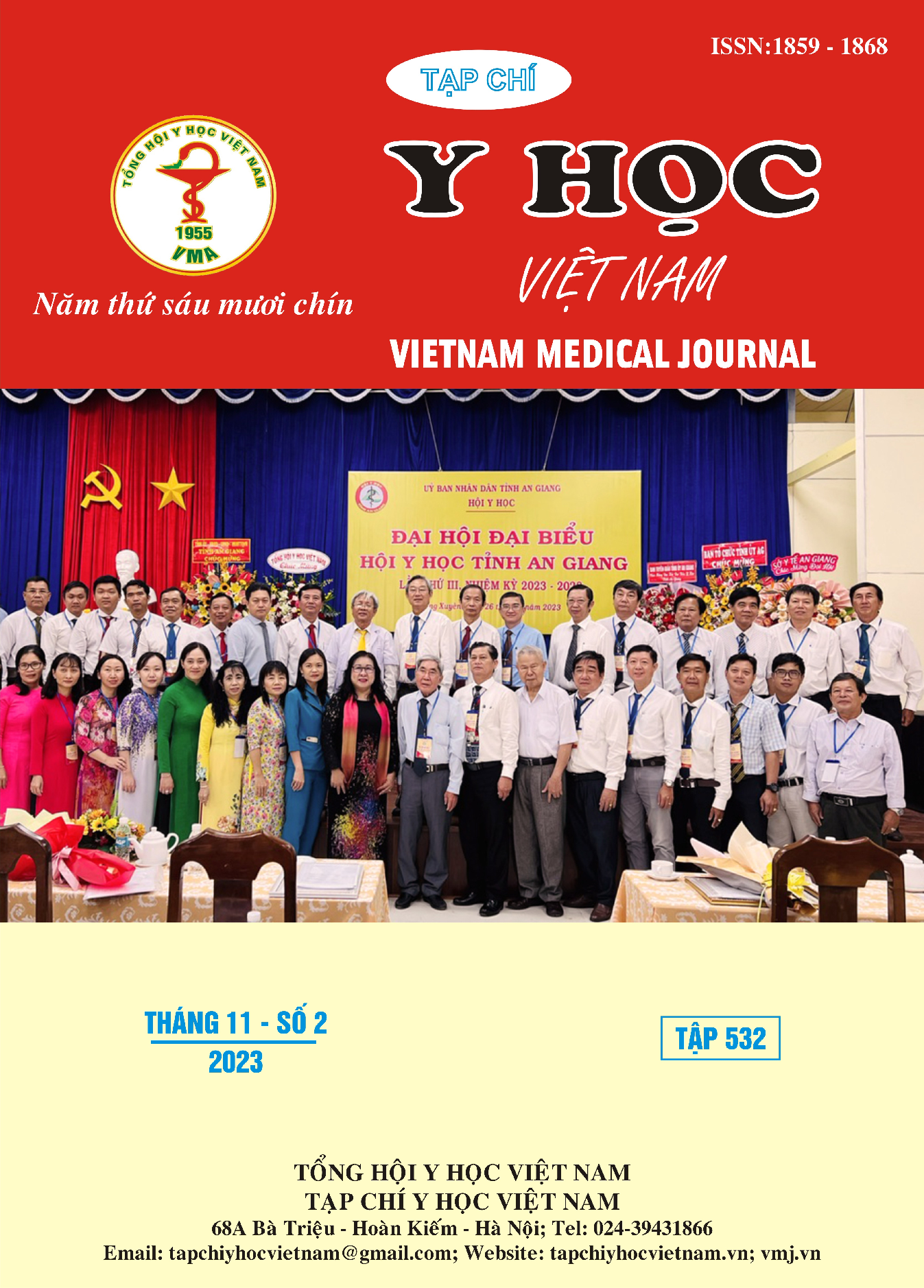ROLE OF SHOCK INDEX IN PREDICT MORTALITY IN BURN SEVERE PATIENTS
Main Article Content
Abstract
Objectives: To evaluate the role of Shock Index in predict mortality in burn severe patients. Subjects and methods: A retrospective study was conducted on 273 adult burn patients (16 – 65) with burn extent
≥ 30% total body surface area (TBSA) hospitalized within 6 hours postburn in the ICU, National Burn Hospital from 01/01/ 2021 - 31/10/2022. Patients were divided into two groups of survival and death, compared in terms of patient characteristics, burn features and shock index. Using ROC test to analyze the mortality prognostic value of factors. Results: The mortality rate was 29.48%. The majority of patients with increased SI (72.83%). Compared with the surviving group, the mortality group had significantly greater shock index, modified shock index and age shock index (p < 0=0.0001). In contrast, the reverse shock index was lower in the mortality group than in the surviving group, the difference was statistically significant (p = 0.0001). Multivariate analysis showed that the age shock index with thickness of burn area and inhalation injury was independently associated with mortality. Combining the age shock index with thickness of burn area and inhalation injury has a very good predictive value of mortality (AUC = 0.95; sensitivity 88.16%; specificity 90.15%), significantly higher than for each factor alone (p = 0.0001). Conclusion: The age shock index with thickness of burn area and inhalation injury are independent predictors of mortality in burn patients. The predictive value of mortality of age shock index with thickness of burn area and inhalation injury is very good.
Article Details
Keywords
shock index, modified shock index, age shock index, burns.
References
2. Tseng J, Nugent K (2015) Utility of the shock index in patients with sepsis. The American journal of the medical sciences, 349(6):531-535.
3. Torabi M, Moeinaddini S, Mirafzal A, Rastegari A, Sadeghkhani N (2016) Shock index, modified shock index, and age shock index for prediction of mortality in Emergency Severity Index level 3. The American journal of emergency medicine, 34(11):2079-2083.
4. Koch E, Lovett S, Nghiem T, Riggs RA, Rech MA (2019) Shock index in the emergency department: utility and limitations. Open Access Emergency Medicine:179-199.
5. Montoya KF, Charry JD, Calle-Toro JS, Núñez LR, Poveda G (2015) Shock index as a
mortality predictor in patients with acute polytrauma. Journal of Acute Disease, 4(3):202-204.
6. Odom SR, Howell MD, Gupta A, Silva G, Cook CH, Talmor D (2016) Extremes of shock index predicts death in trauma patients. Journal of emergencies, trauma, and shock, 9(3):103.
7. Pires-Menard A, Dong F, Jin R, Lee D, Poulakidas S, Bokhari F (2022) Initial Pulse
Pressure and Shock Index Predict Mortality in Burn Patients. Research Square, 1: 1-12
8. Kim SY, Hong KJ, Do Shin S, Ro YS, Ahn KO, Kim YJ, Lee EJ (2016) Validation of the shock index, modified shock index, and age shock index for predicting mortality of geriatric trauma patients in emergency departments. Journal of Korean medical science, 31(12):2026-2032.


